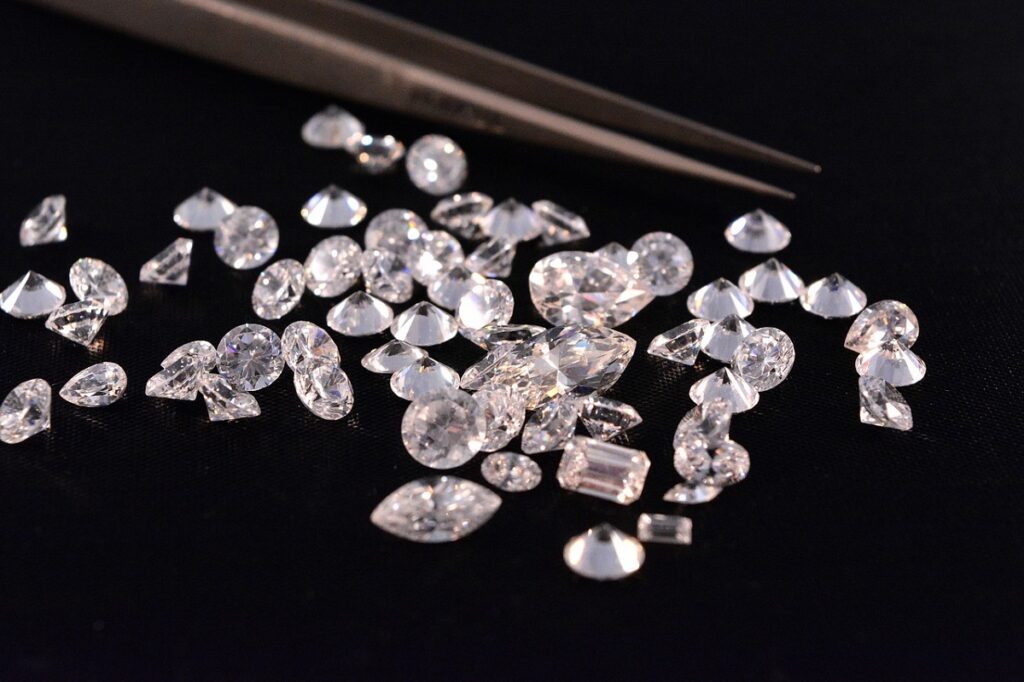
Understanding the 4Cs: Color, Clarity, Cut, and Carat, can help anyone choose the perfect diamond ring!
Diamonds are some of the most precious gems in the world. Created deep in the earth’s surface, most are over a billion years old! As diamonds continued to grow in demand (especially within the American wedding industry) gemologists needed a more systematic way to assess their value.
To solve this problem, the 4Cs (color, clarity, cut, and carat) were established by the Gemological Institute of America (GIA) in the 1950s. It’s important to note that even before the 4Cs, gemologists in India were using color, clarity, and carat to grade diamonds for over 2,000 years. Today, the 4Cs are used around the world and are recognized as the “Global Language of diamond quality.”
These 4 factors, including how humans shape and design the diamond itself, determine how valuable a diamond is. Understanding what each one means can help you pick out the perfect ring, too!
Keep reading below for more insight on diamond quality and how to pick the perfect ring!
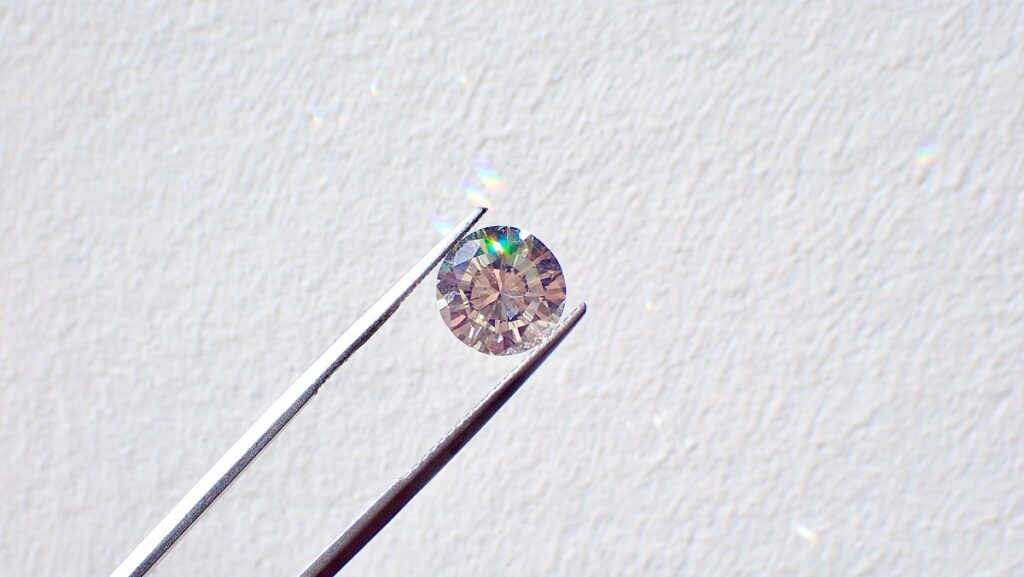
Color…
A diamond’s color falls into a range of three different hues: colorless, light yellow, and brown. These are all normal colors; however, each one drastically affects its value.
Specifically, the presence of any color at all actually decreases a diamond’s value. The most precious and rare diamonds in the world are completely clear. So, the price of a diamond, and its value, increases when there’s little to no color at all.
To determine the color of each gem, the GIA compares unidentified ones with round brilliant diamonds of known colors to place them on a color scale labeled from D to Z. The letter D represents colorless and is most valuable, while Z has the most color and is least valuable.

Clarity…
The internal features of a diamond also determine its value. This is where our second C, Clarity, comes into play.
You can think of clarity as assessing how a diamond physically looks. If you can see scratches and nicks on the surface of your gem, its clarity rating is likely very low. These surface-level irregularities are actually called Inclusions.
Assessing these Inclusions, the GIA bases diamond clarity against a scale of 11 different grades. The most valuable grade, Flawless (just like you, Queen!) is very, very rare. On the other end of the scale is the least valuable grade: Included. Most diamonds fall somewhere in the middle.
Ultimately, other factors, including the position of the flaw on the diamond, will affect its clarity.
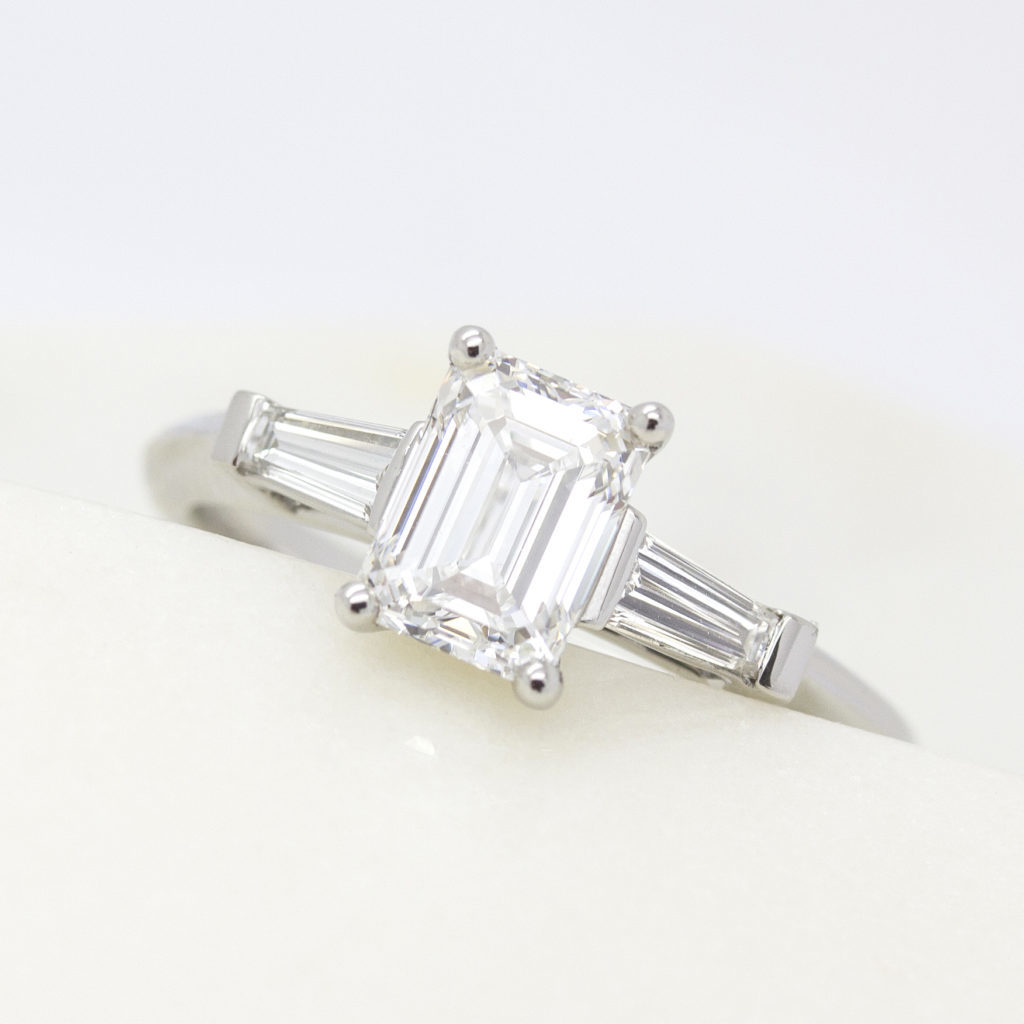
Cut…
When picking out your wedding bling, a diamond’s cut may be the most important thing to consider. The cut itself (including its proportions) determines the face-up appearance of the diamond and how it interacts with light.
For example, when you’re admiring a diamond ring, there are actually three optical effects going on that help create that sparkle look. These include white light reflections called Brightness, flashes of color called Fire, and areas of light and dark called Scintillation. These three effects all contribute to the sparkle – and it all has to do with cut! If a ring is disproportioned, unpolished, and lacks symmetry, it won’t be appealing to the eye (or very valuable, either).
Besides the standard round cut, some of the most common ring shapes to consider include the marquise, princess, pearl, oval, heart, and emerald cut.
Carat Weight…
Many people think the bigger the bling, the better the diamond. But, this isn’t necessarily true. A diamond’s weight doesn’t always match its value.
Diamonds are actually weighed in metric units called carats. A one-carat diamond is about the weight of a small paperclip. So, considering the quality of the diamond (beyond just its carat weight) can be a difference of hundreds of thousands of dollars. Of course, a larger diamond is rarer and costs more per carat, but its value is determined by ALL of the 4Cs.
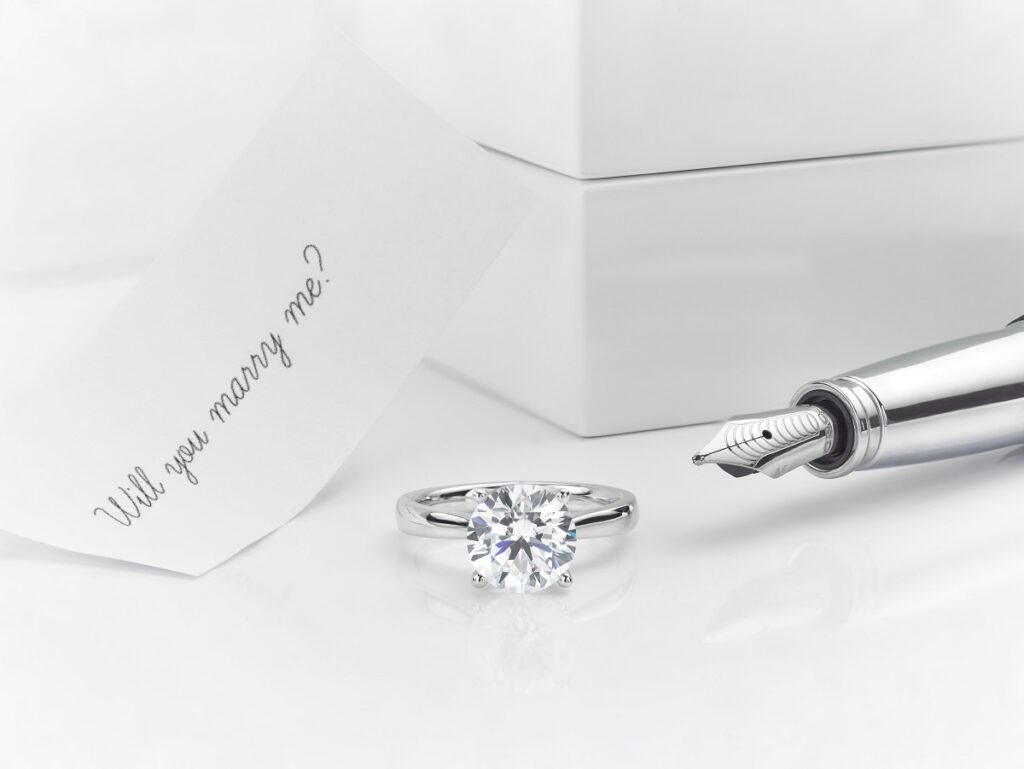
Looking for more diamond inspiration?
Click here.
Sources:
- “Diamond Quality Factors” – GIA.edu
- “Diamond Cut: Grading Scale and Buying Tips” – Blue Nile
- “Is a Diamond a gem or a mineral?” – Diamond Rocks UK
- “The History of the Engagement Ring” – (Published: Oct. 10. 2018); Estate Diamond Jewelry (Blog); written by: Benjamin Khordipour
- History of Engagement Rings – American Gem Society
- Photos courtesy of Unsplash & Pixabay; Specified rings from Taylor & Hart Custom Designed Engagement Rings & Jewelry







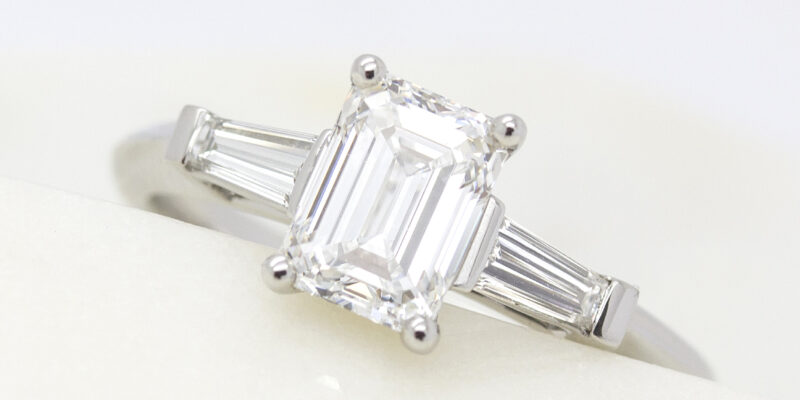


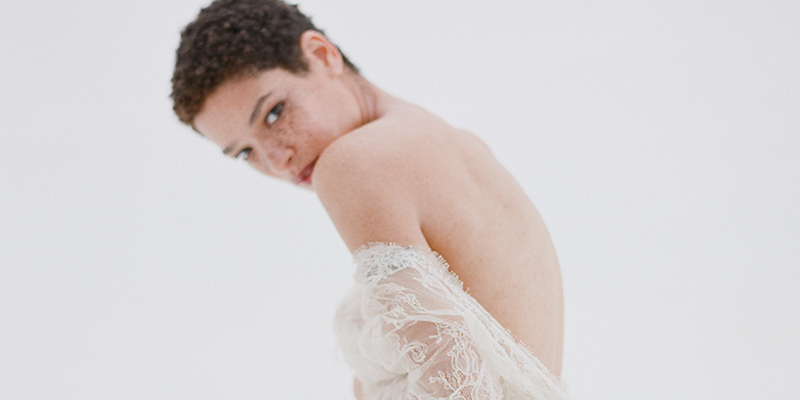
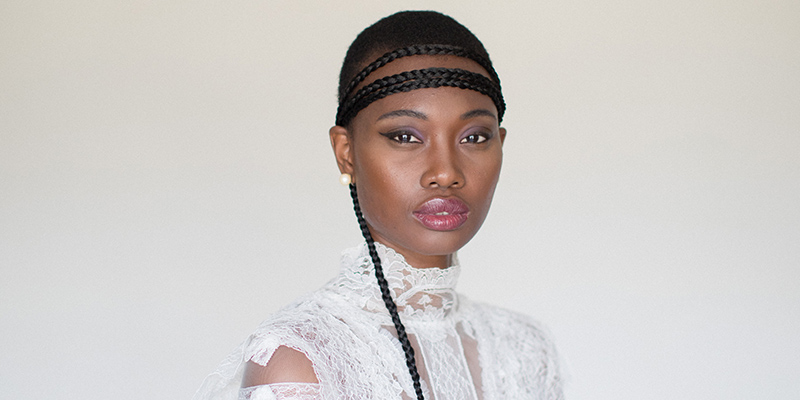
Leave a Reply